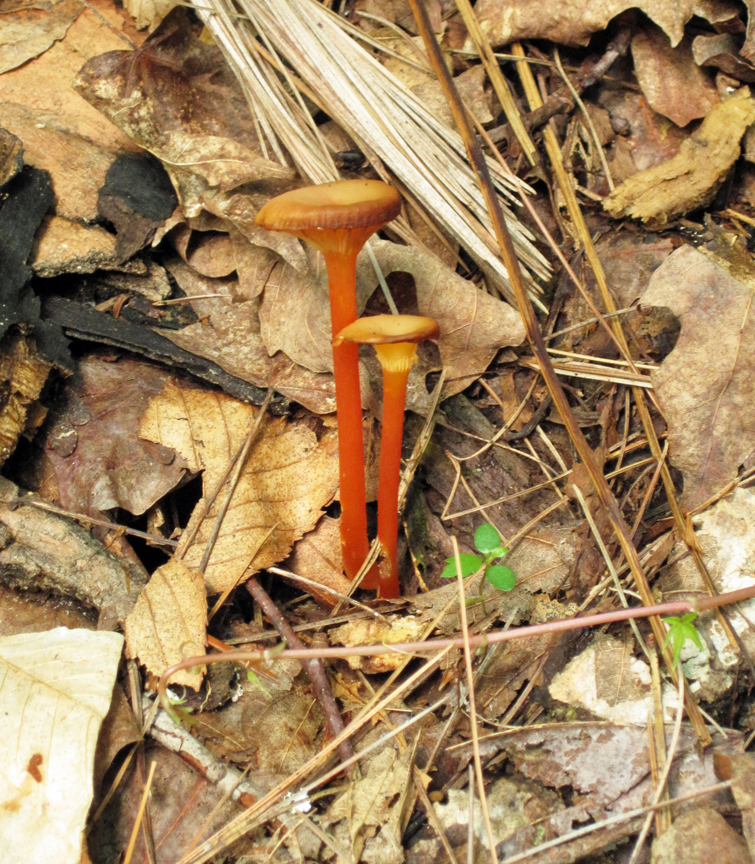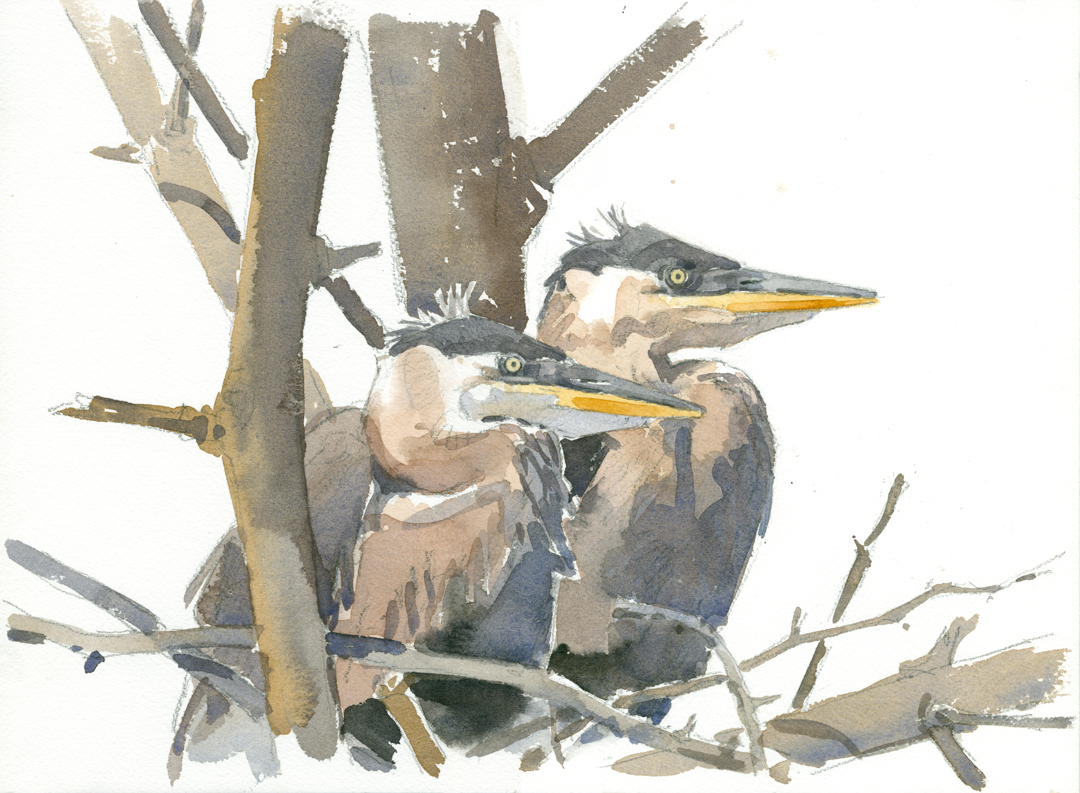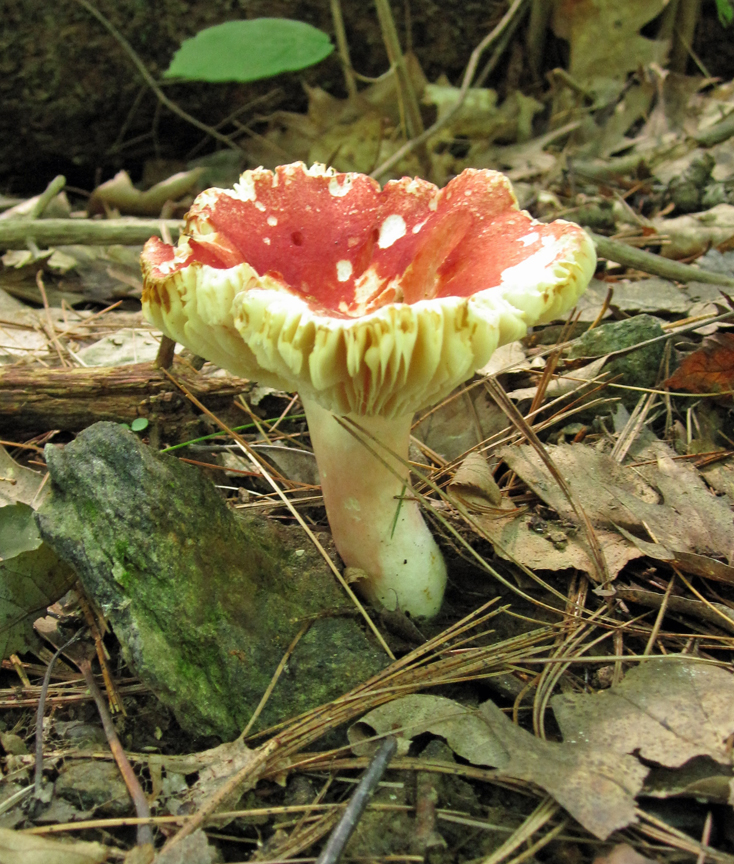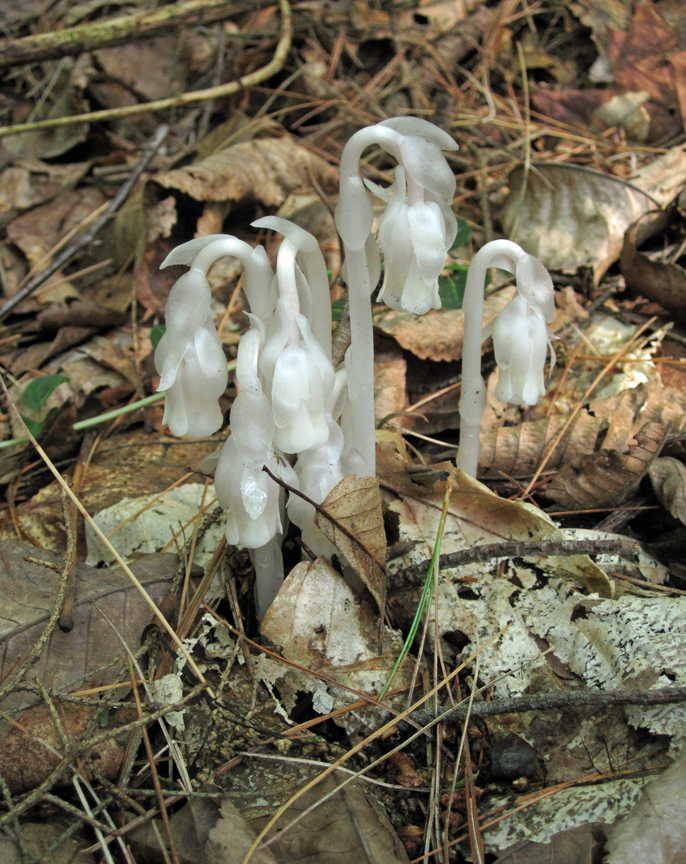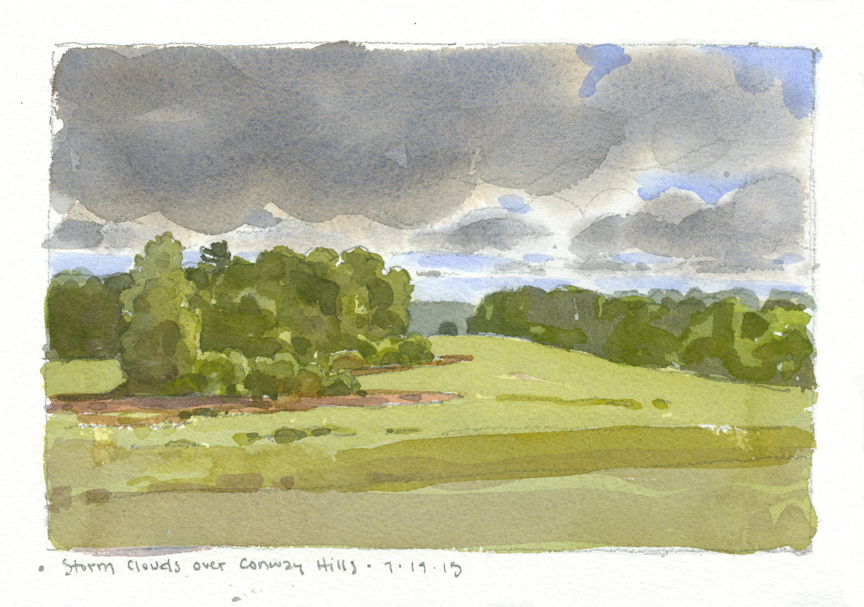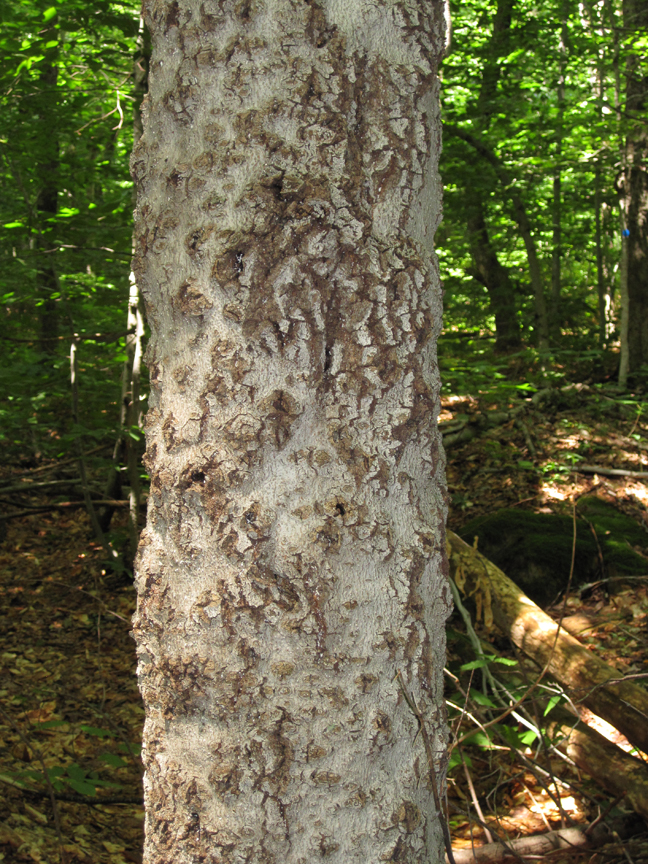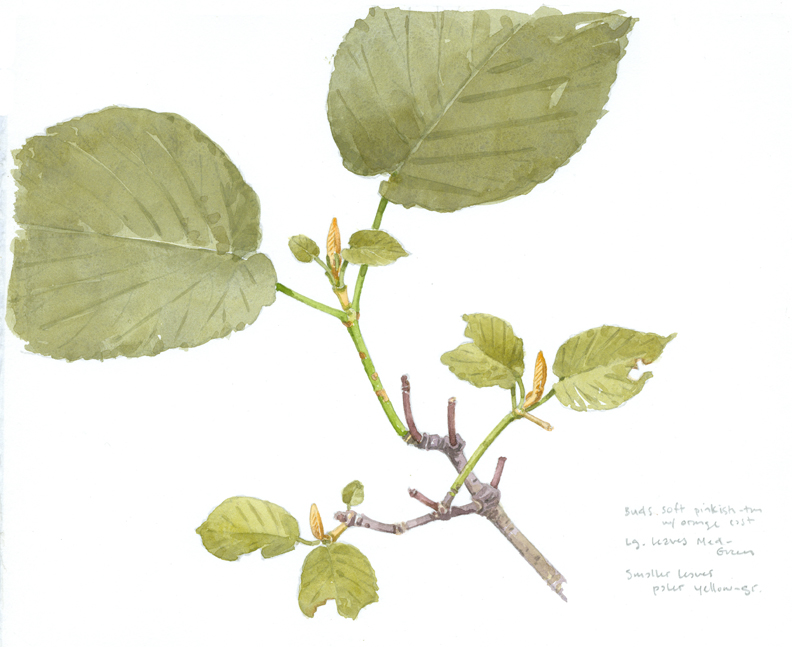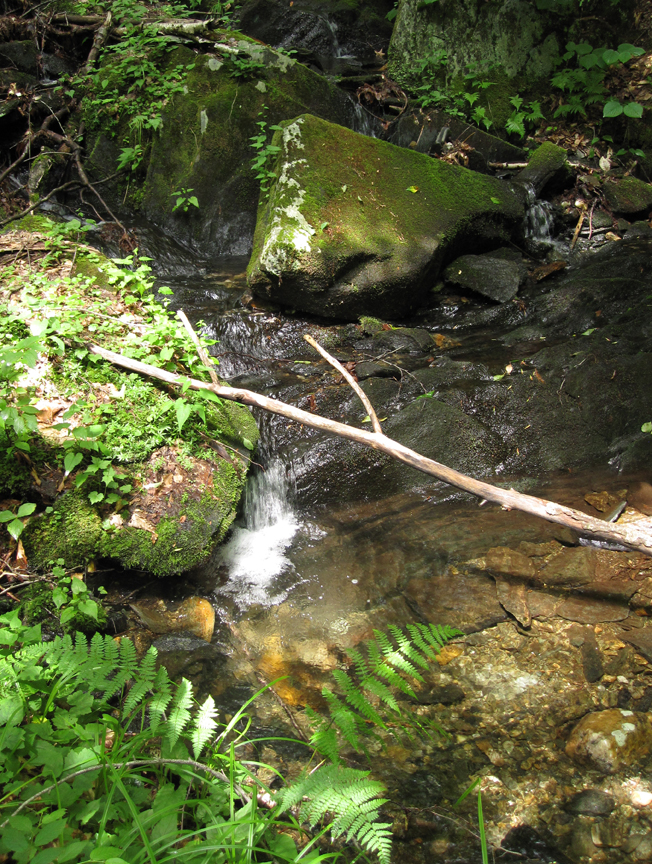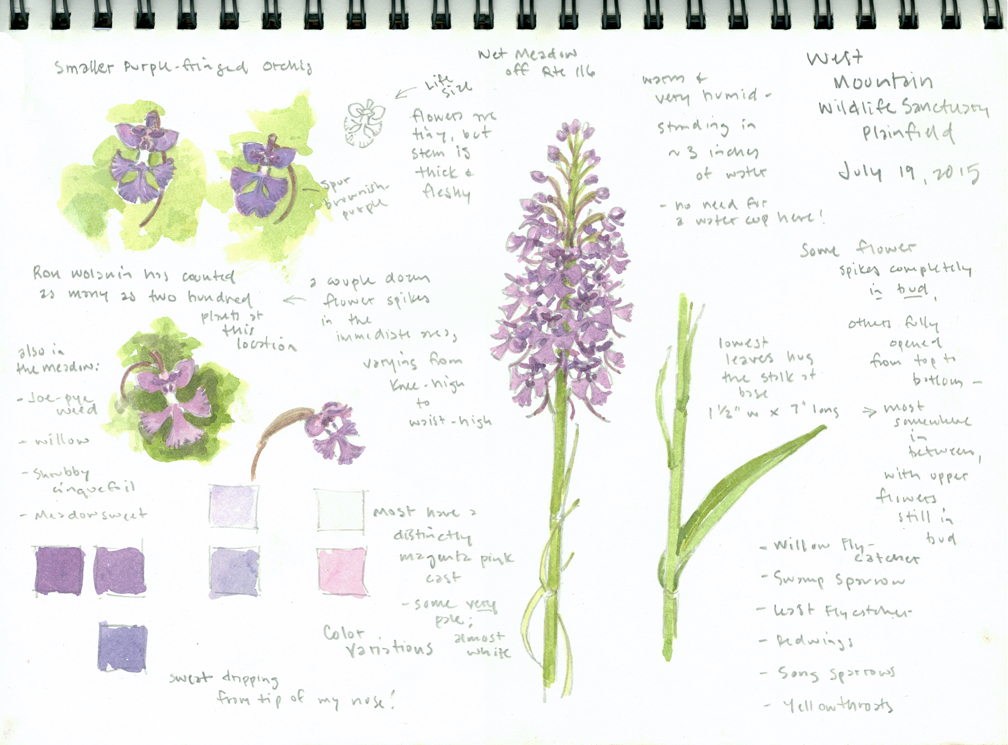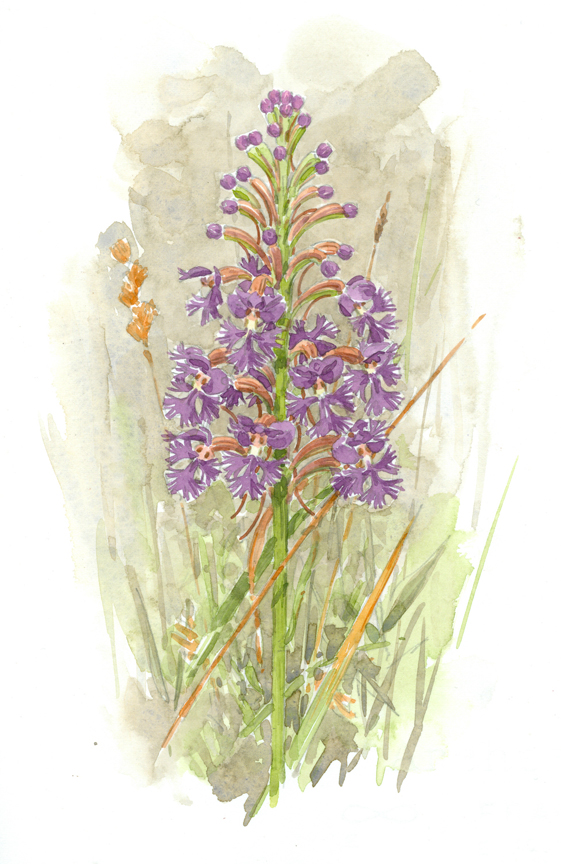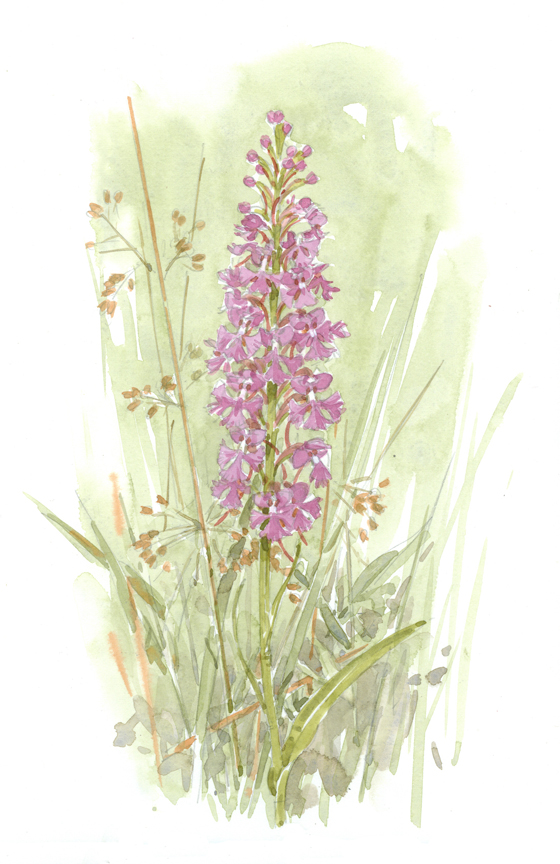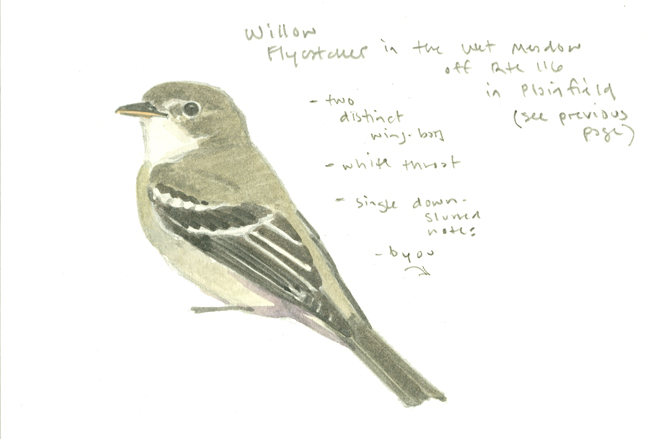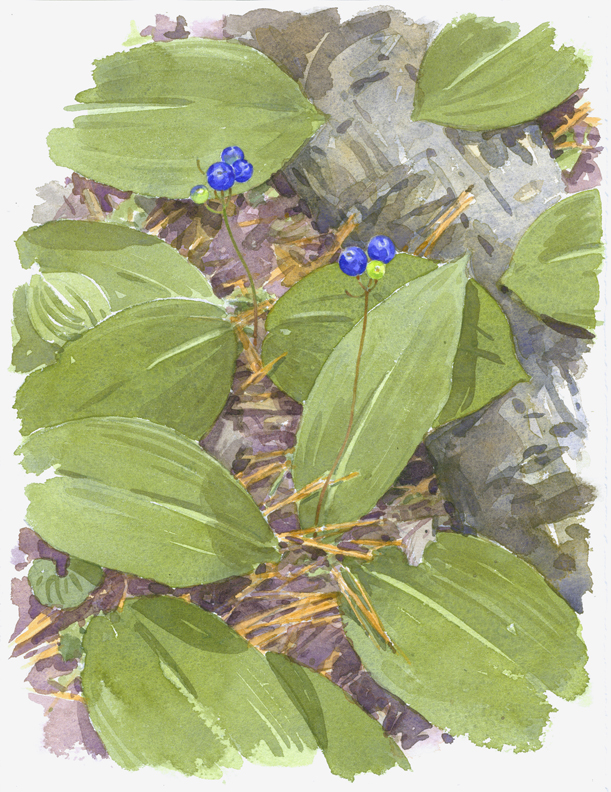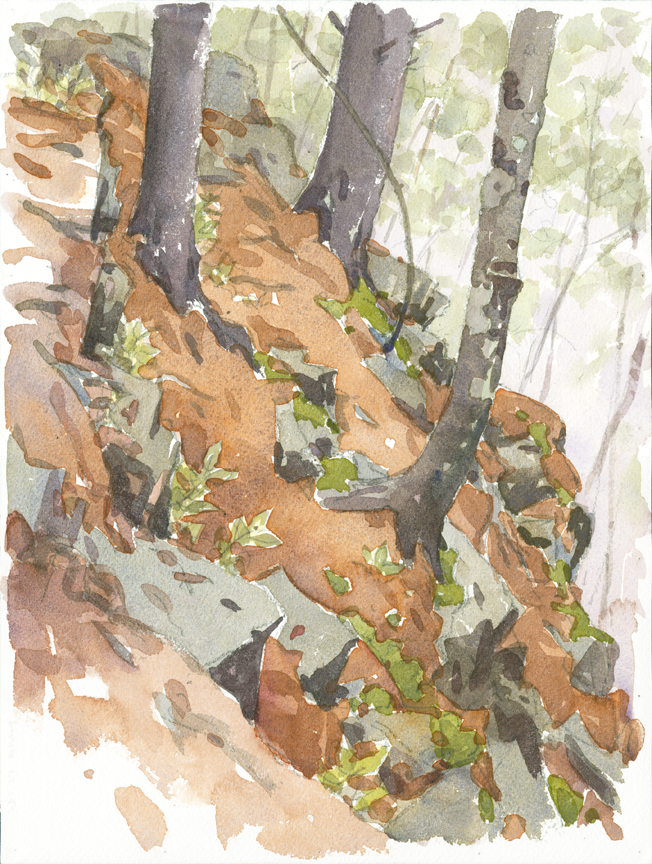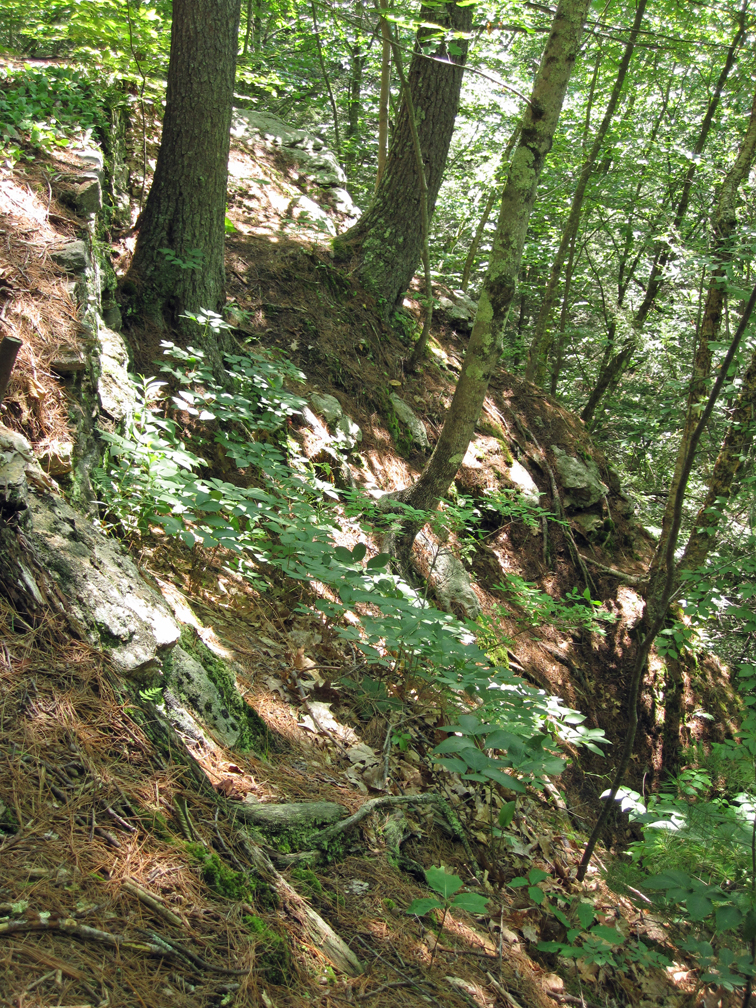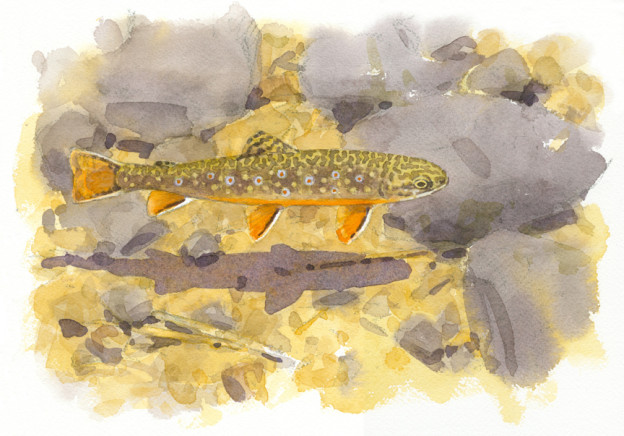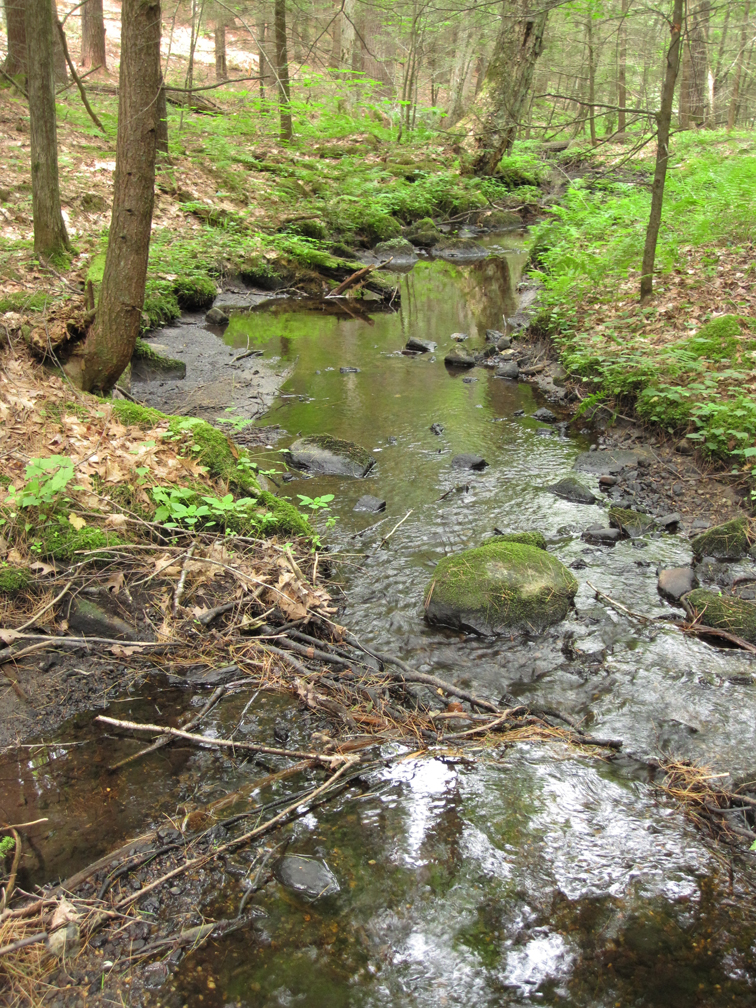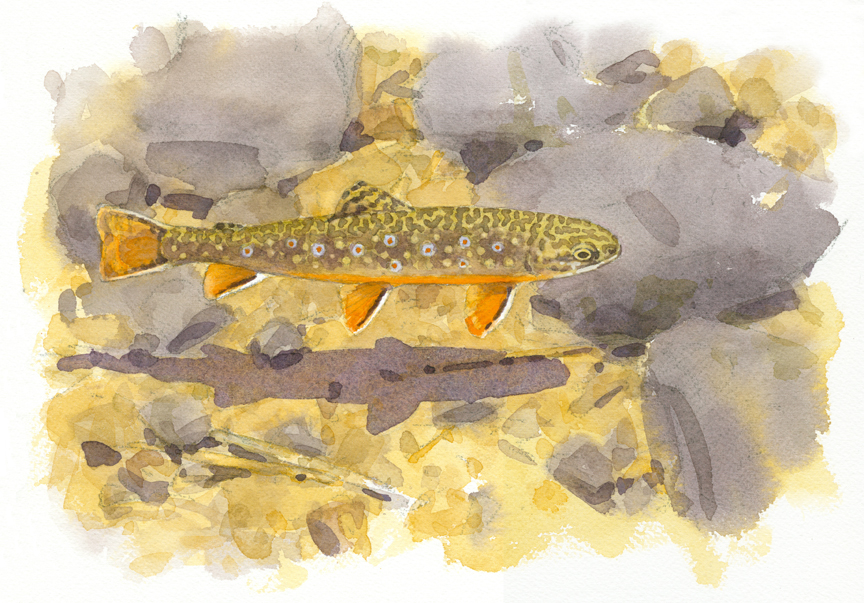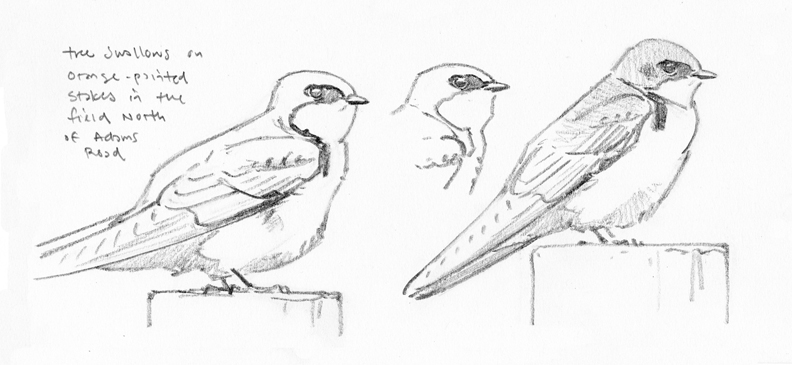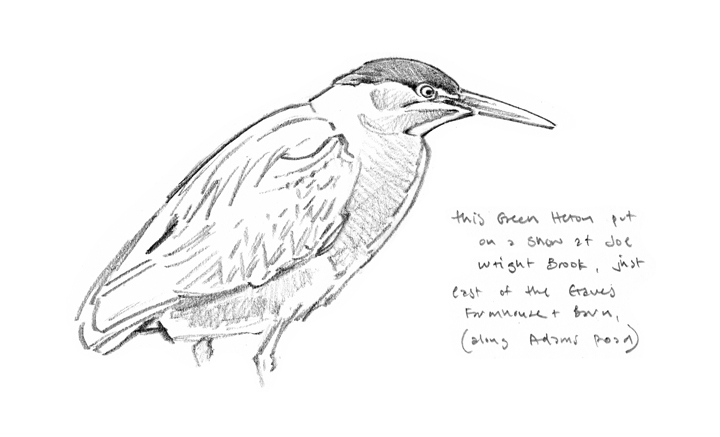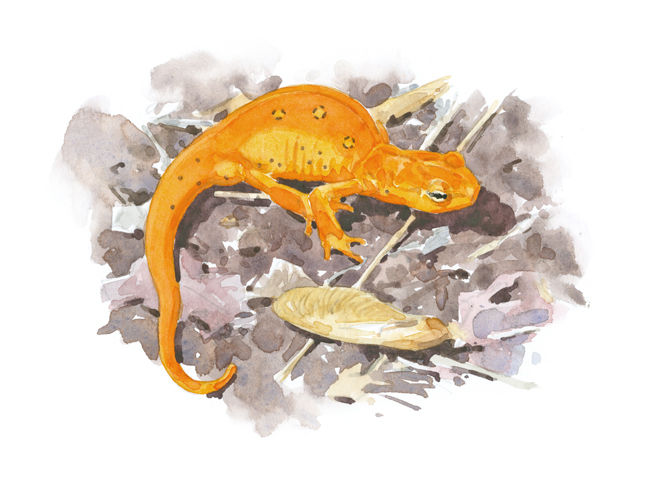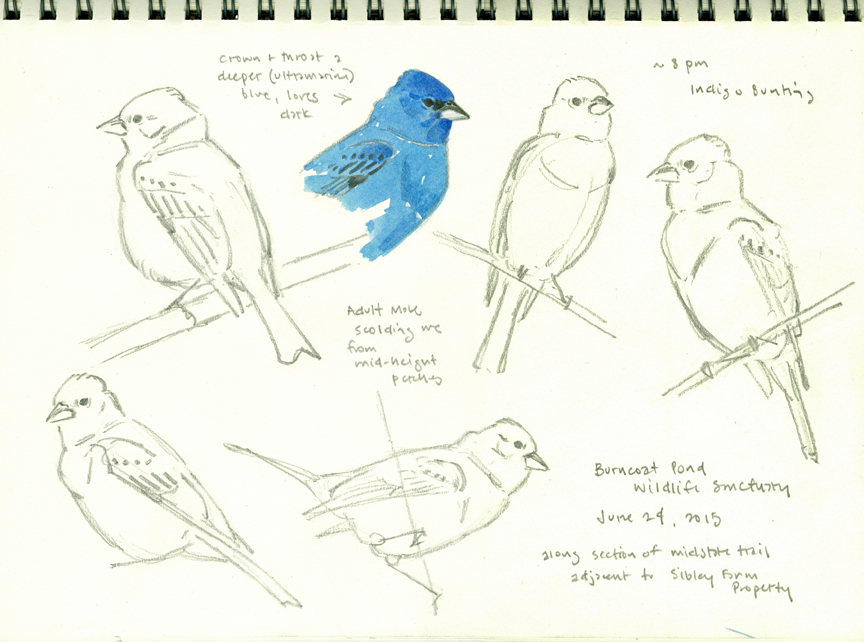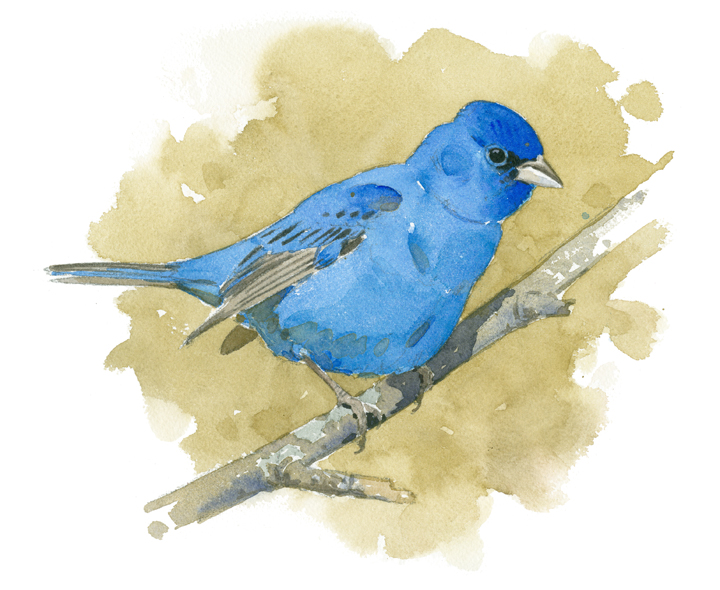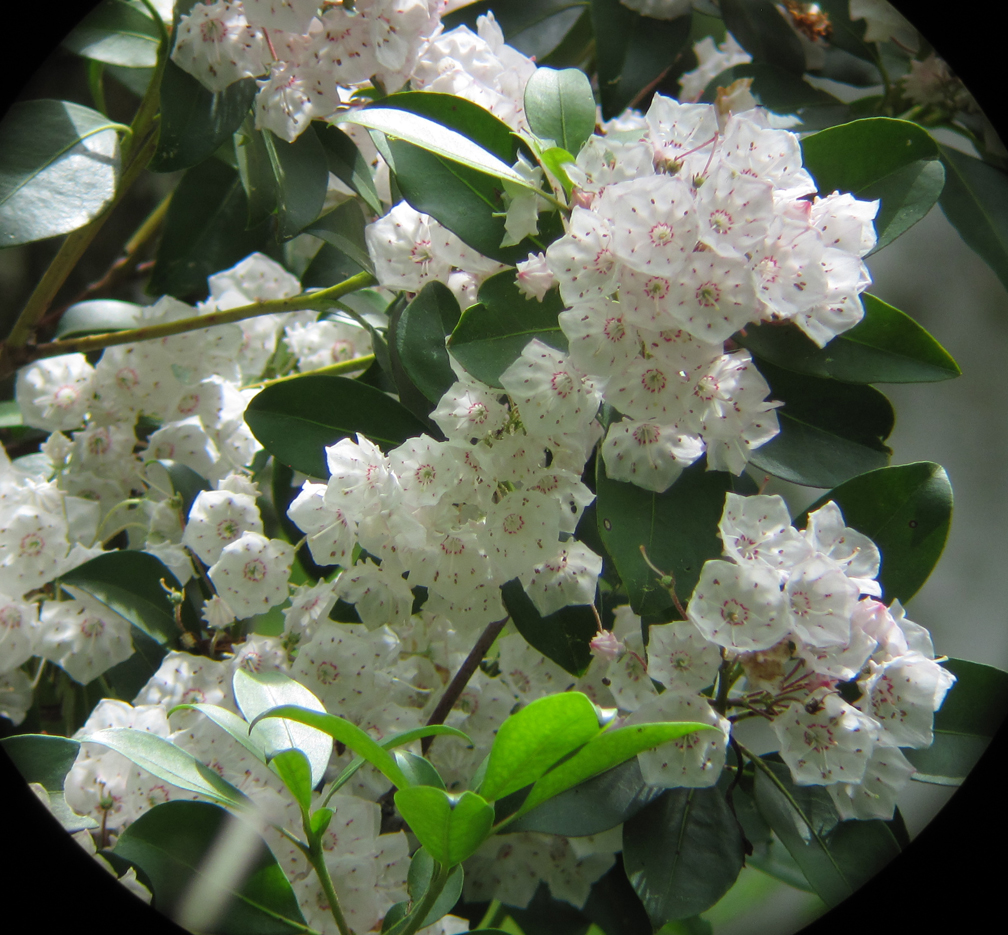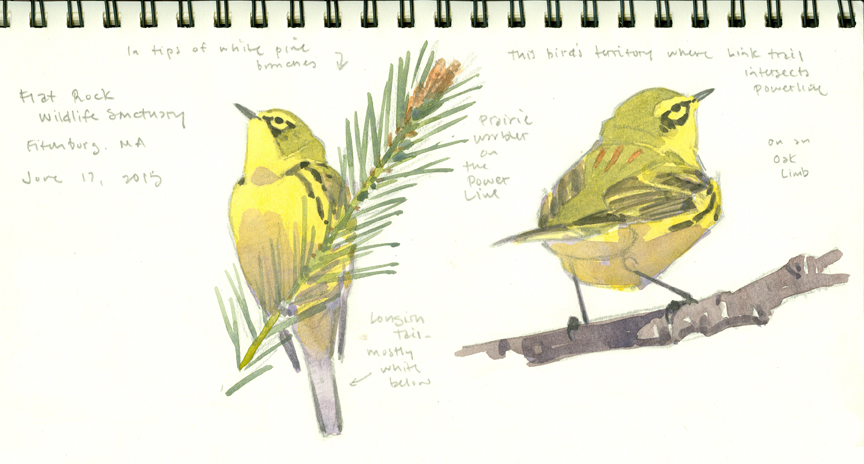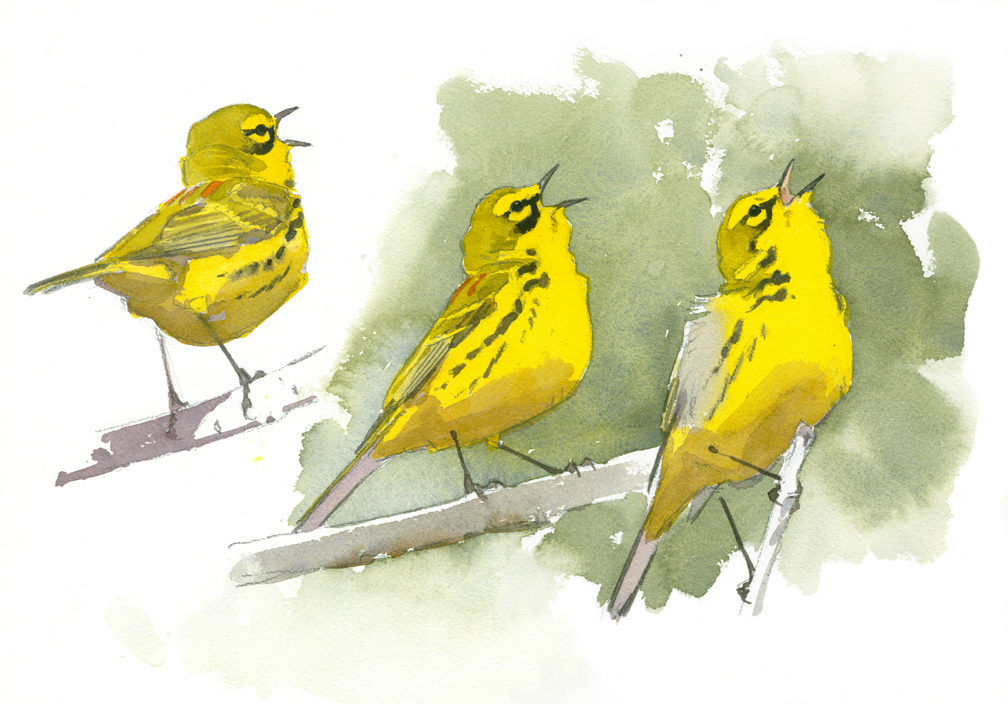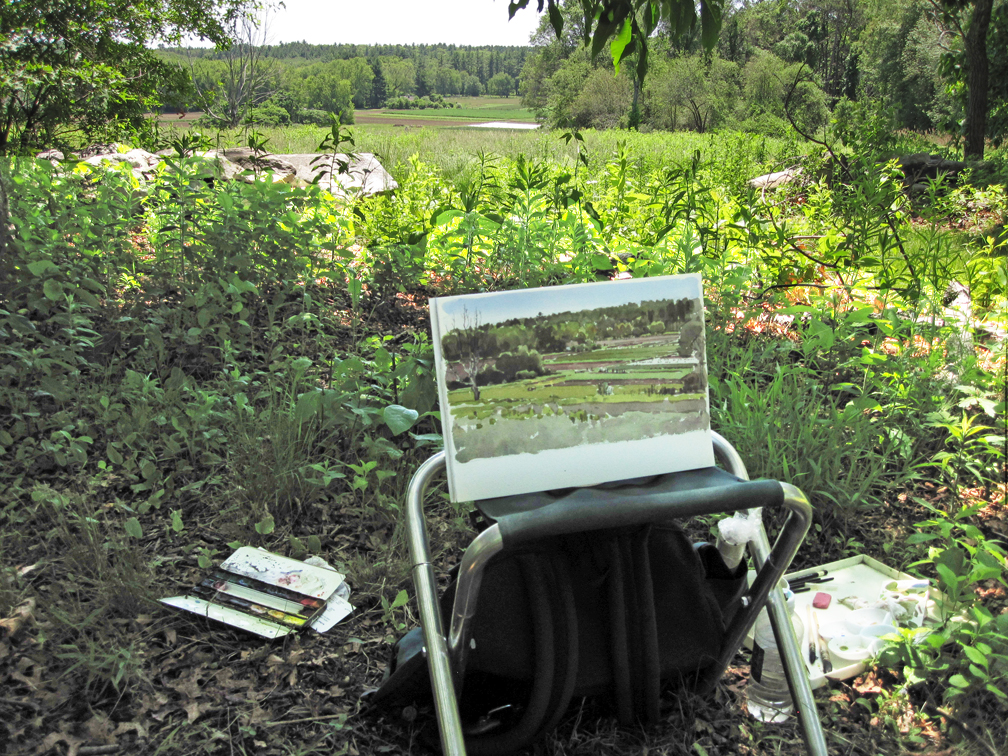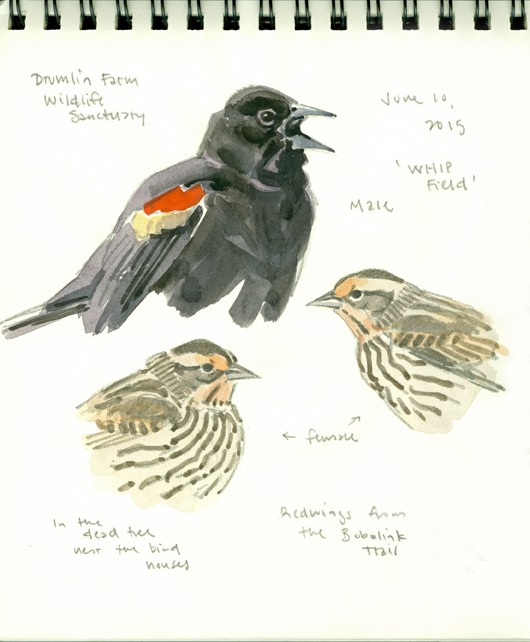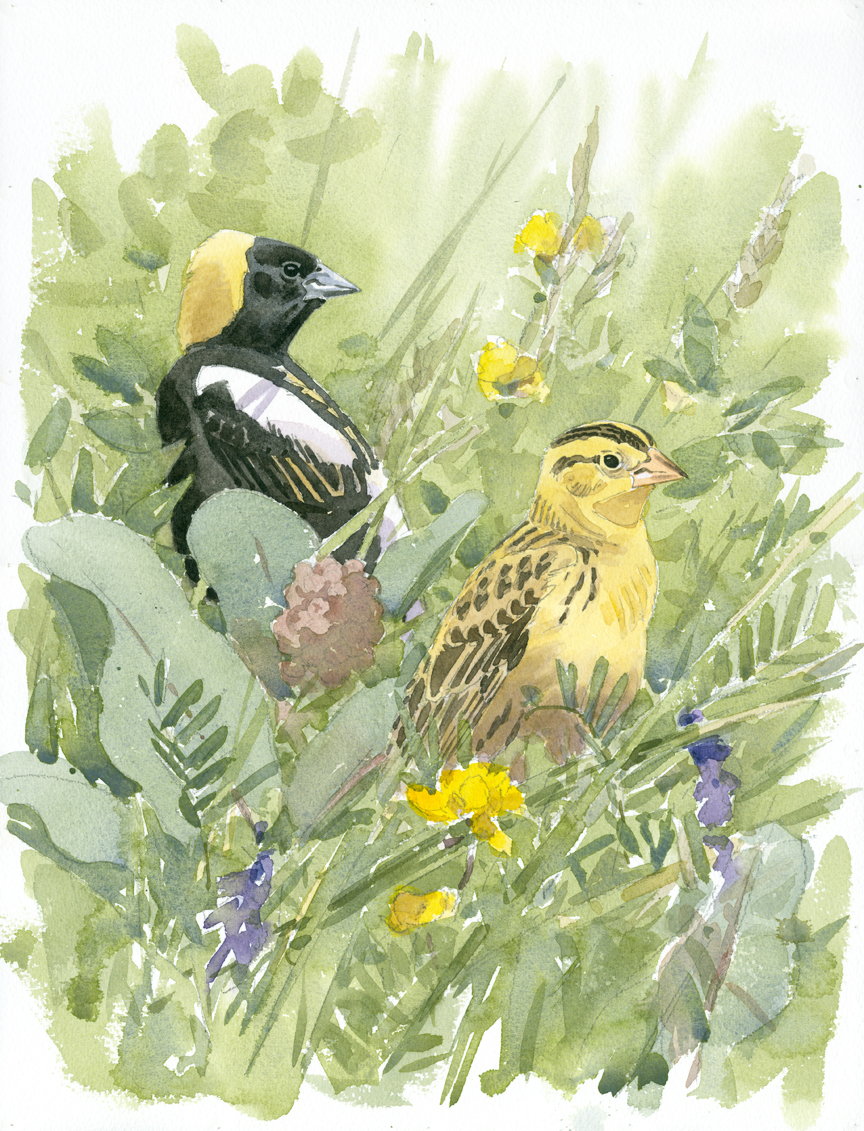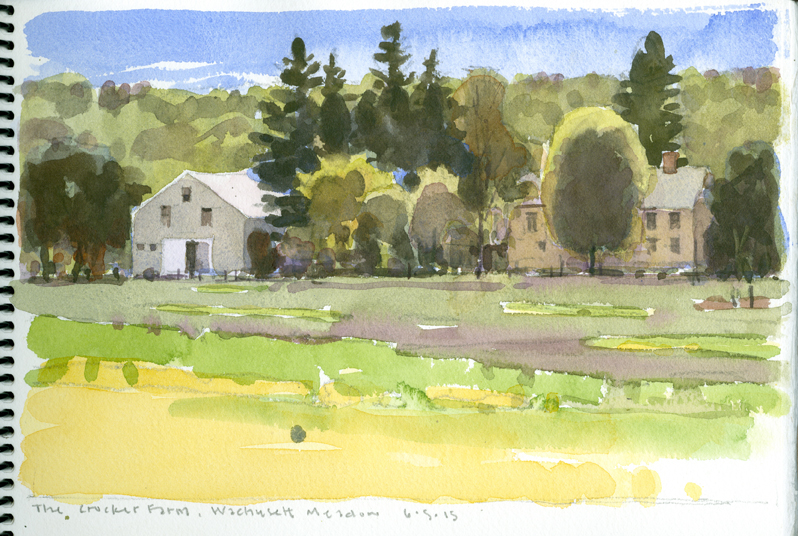This is from a series of posts by MABA resident artist Barry Van Dusen
Broad Meadow Brook Wildlife Sanctuary, Worcester on July 2, 2015
I meet Deb Cary in the parking lot off Massasoit Road when I arrived at the sanctuary around opening time. She suggests that my first destination should be the Wilson Meadow at the southeast corner of the property. Broad Meadow Brook is the largest urban wildlife sanctuary in New England, and both of these attributes – LARGE and URBAN – will be evident at various times during my visit.
The education center is bustling with day campers and visiting families, but the trails at this early hour are quiet. The Wilson Meadow Link Trail follows a raised berm alongside a red maple swamp, affording nice, open views of standing dead timber in the swamp. It’s a good place for drawing birds with a scope, and I do a page of red-winged blackbird studies in my field sketchbook. Waxwings, robins, tree swallows and both green and great blue herons are also in attendance.

Red-winged Blackbird Studies, sketchbook page, pencil, 9″ x 12″
Rounding the backside of the Wilson Meadow, I’m struck by the view of the handsome old barn at the Wilson-Rice Homestead, and decide to do a watercolor. Two majestic white pines frame the scene on the left. Sunlight dapples the roof and sidewall of the barn, while the backside is bathed in shadow. It’s an unexpectedly pastoral scene, right here in the heart of New England’s second largest city!
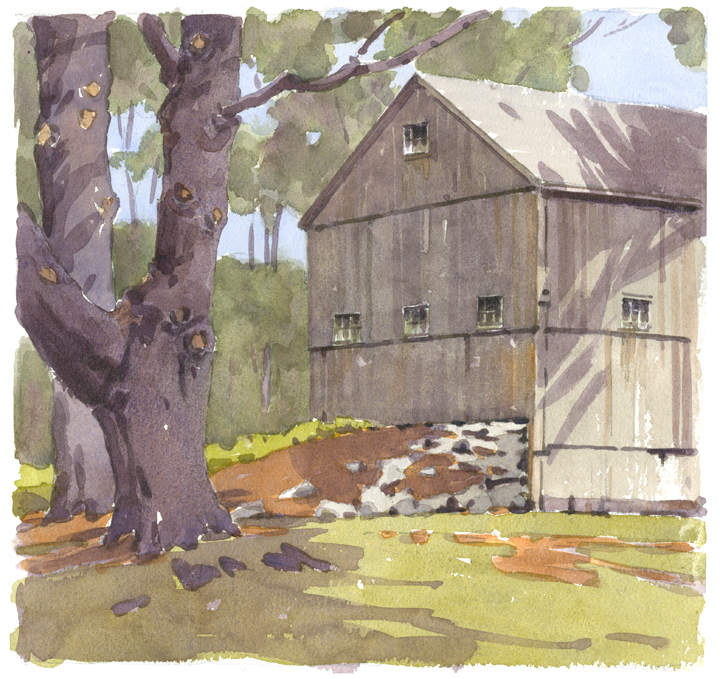
Wilson-Rice Barn at Broad Meadow Brook, watercolor on Arches cold-press, 9.5″ x 10″
After lunch, I hike out along the Cardinal Trail to the powerlines – a hotspot for butterflies (Broad Meadow Brook boasts the largest butterfly list of any of the Mass Audubon properties!) The open meadows below the transmission lines are managed for wildlife through a cooperative partnership with the power company, and I notice (by sight or sound), all of the avian powerline “regulars” here: towhee, field sparrow, prairie warbler and indigo bunting.
Setting up near the decorated bench dedicated to Barbara Walker, I find coral hairstreaks, great spangled fritillaries, a monarch, an American lady and a snowberry clearwing moth flitting among the milkweed and goldenrod.

American Ladies, watercolor on Arches hot-press, 9″ x 12″
Heading back along the Blue Well Trail, where it becomes a short section of boardwalk, I find a single ebony jewelwing. It perches briefly on the lush vegetation growing along the brook, and I admire its paddle shaped all-black wings and jewel-like body with turquoise and ultramarine highlights.

Ebony Jewelwings, watercolor on Whatman paper, 6.5″ x 10.5″
Along many of the woodland trails, thick growths of sassafras seedlings carpet the forest floor. The leaf shapes of the seedlings are quite variable, but they all have a cartoonish aspect. All those in-and-out curves look like something drawn by a child, or maybe a Disney animator!
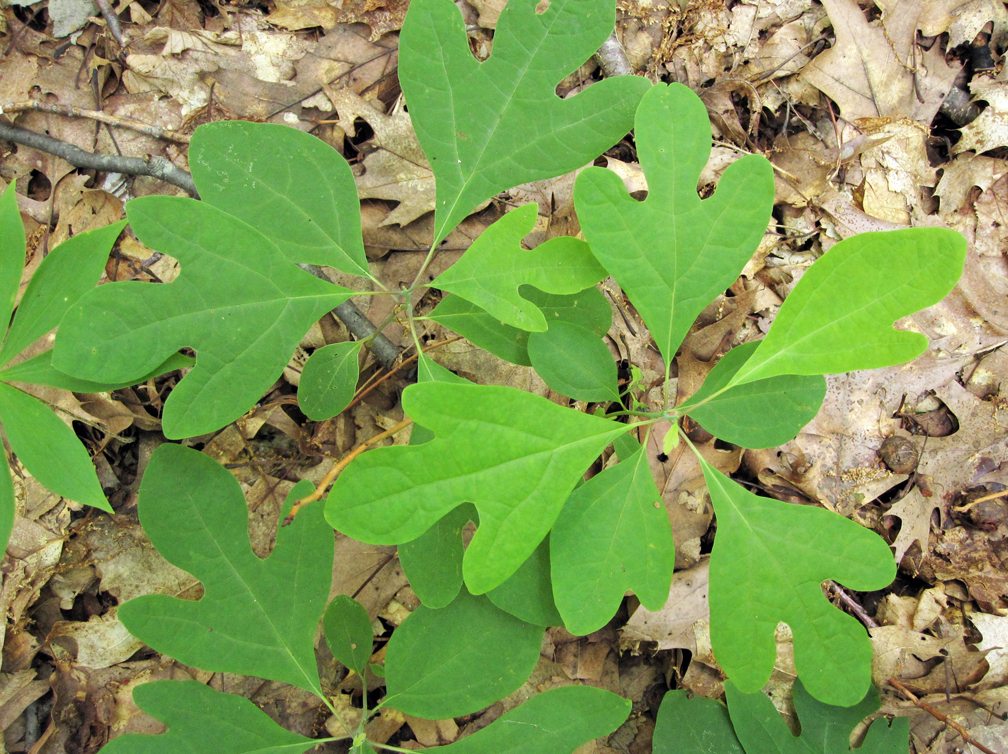
On the Sprague Trail, I hear the “chick-burr” notes of a scarlet tanager and soon thereafter notice two birds moving through the mid-story of the forest. It’s an adult scarlet tanager being shadowed by one of its offspring – full grown, but in juvenile plumage. The adult appears abit annoyed and harried by the youngster, who follows the parent closely, fluttering its wings and begging loudly! I take some notes on this seldom-seen juvenile plumage, and make some quick studies of the adult.
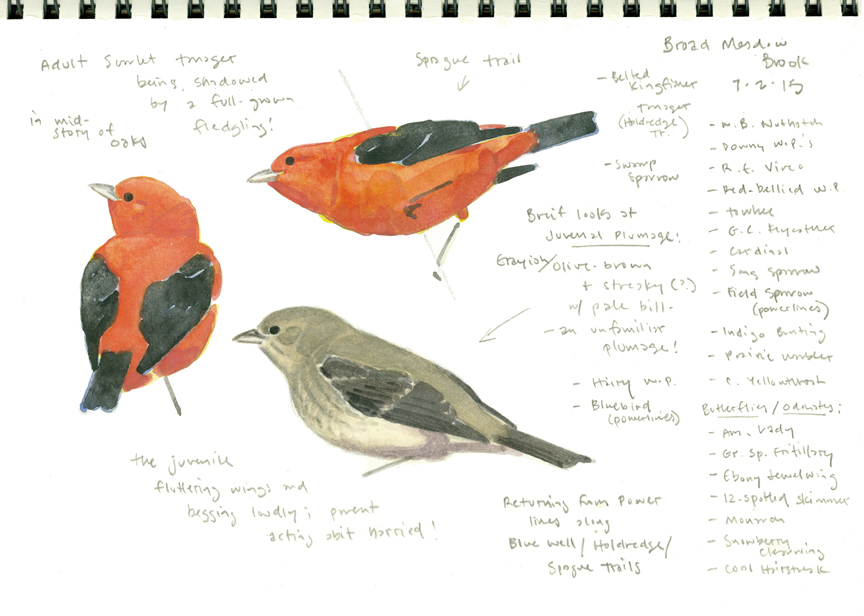
Scarlet Tanager Studies, watercolor and pencil sketchbook page, 9″ x12″

